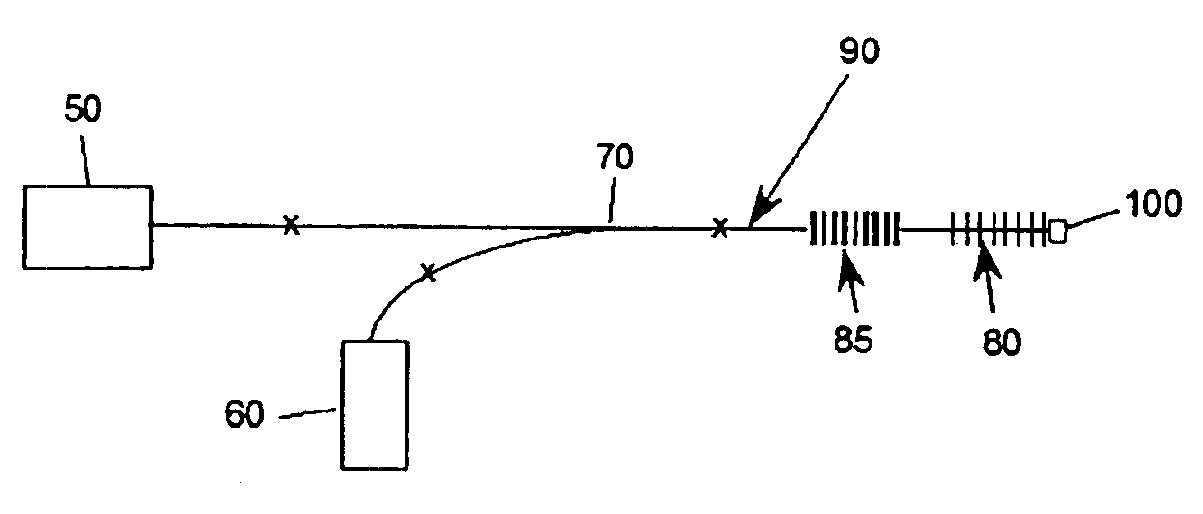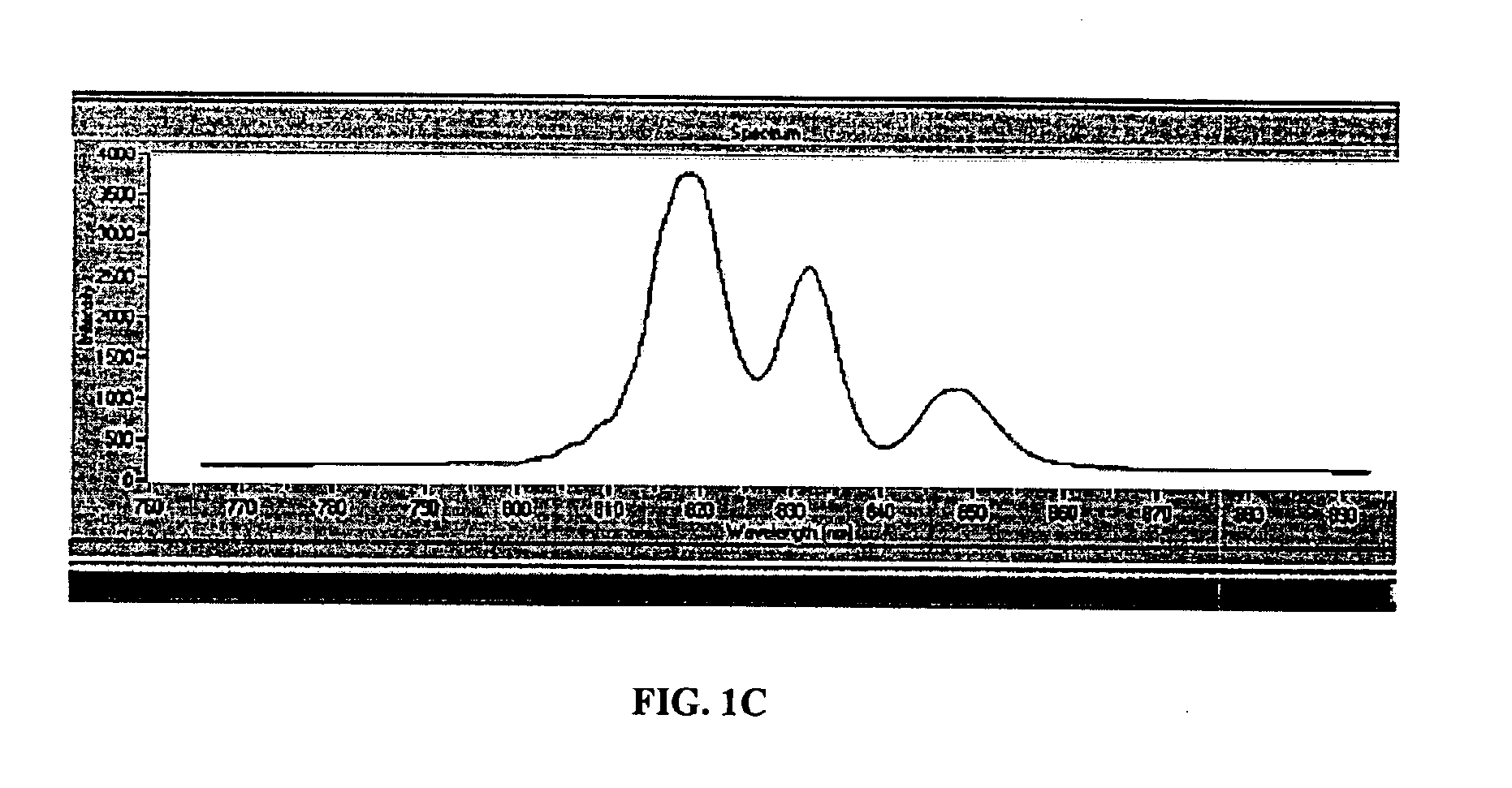Fiber-optic apparatus and method for making simultaneous multiple parameter measurements
a fiber optic and measurement method technology, applied in the field of fiber optic methods and apparatuses for simultaneous multiple parameter measurement, can solve the problems of inability to distinguish between different parameters, limited methods, and inability to separate the effects of changes
- Summary
- Abstract
- Description
- Claims
- Application Information
AI Technical Summary
Problems solved by technology
Method used
Image
Examples
example 1
[0086]To demonstrate different sensing field depths for different wavelengths, tests were performed through sandwiching of IgG antibodies. To experimentally determine sensing depts. For the various long period grating (LPG) sensors, antibody sandwich layers were applied to the LPG sensor until there was no minimal shift in wavelength (1 / e point). The LPG was constructed with a 69 micron period for the 820 nm response and a 136 micron period for the 1530 nm sensor. Fibers were prepared using a methanol wash for one hour and were then silated with aminopropylsilane. A goat-anti-rabbit antibody was covalently attached through EDAC chemistry. Alternating layers of goat-anti-rabbit and rabbit-anti-goat were then applied by exposing the fibers to samples at 100 μg / ml. FIG. 6A depicts the response decay for anti-rabbit / rabbit anti-goat antibody binding for the 820 nm system and FIG. 6B depicts the response decay for the 1530 nm system. The 820 nm systems illustrates 12 layers for antibody ...
example 2
[0087]The method of the present invention was employed to measure thickness on a cylindrical object by long period grating (LPG) changes in thin film coating systems. To measure the sensing depth of the sensor, an ionically self-assembled monolayer (ISAM) coating process consisting of alternating layers of cations and anions was employed. Poly(diallyldimethyl ammonium choloride) (PDDA) and Poly(sodium 4 styrenesulfonate) (PSS) were selected for their stability between wet and dry states. In order to verify the thickness of each bilayer, several silicon wafers were cleaned and varying ISAM layers were applied to the wafer. Measurements were made using an ellipsometer. The following procedure was used to coat 40, 70, and 90 bilyaers on three different slides. Thickness was then measured using an ellipsometer. Once measurements were taken, the same procedure was used to coat the LPG sensors to determine the evanescent sensing depths.
[0088]All wafers / sensors were initially cleaned using...
PUM
 Login to View More
Login to View More Abstract
Description
Claims
Application Information
 Login to View More
Login to View More - R&D
- Intellectual Property
- Life Sciences
- Materials
- Tech Scout
- Unparalleled Data Quality
- Higher Quality Content
- 60% Fewer Hallucinations
Browse by: Latest US Patents, China's latest patents, Technical Efficacy Thesaurus, Application Domain, Technology Topic, Popular Technical Reports.
© 2025 PatSnap. All rights reserved.Legal|Privacy policy|Modern Slavery Act Transparency Statement|Sitemap|About US| Contact US: help@patsnap.com



